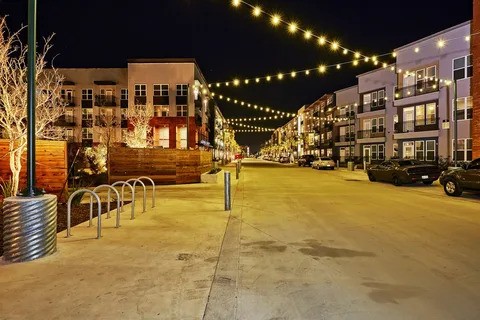
In the realm of commercial outdoor lighting, the integration of electric light sources has revolutionized the way businesses illuminate their exteriors. From enhancing security to creating inviting atmospheres, the strategic use of electric light fixtures plays a pivotal role in achieving optimal lighting solutions. This article delves into the significance of commercial outdoor lighting, exploring various electric light options and their impact on business environments.
Understanding Commercial Outdoor Lighting
Commercial outdoor lighting encompasses the illumination of exterior spaces associated with businesses, including parking lots, walkways, building facades, and signage. The primary objectives of such lighting are to ensure safety, improve visibility, and enhance the aesthetic appeal of the property. Properly designed lighting can deter criminal activity, guide customers to entrances, and highlight architectural features, thereby contributing to a positive brand image.
The Evolution of Electric Light Fixtures
Traditional outdoor lighting solutions often relied on incandescent or fluorescent bulbs, which, while effective, had limitations in terms of energy efficiency and longevity. The advent of electric light technologies, particularly LED (Light Emitting Diode) fixtures, has brought about significant advancements in commercial outdoor lighting.
LED electric light fixtures offer numerous advantages over their predecessors. They consume less energy, have a longer lifespan, and provide brighter illumination with less heat emission. These attributes make them an ideal choice for businesses seeking cost-effective and sustainable lighting solutions. Moreover, the versatility of LED fixtures allows for various applications, from floodlights illuminating expansive parking areas to accent lights highlighting architectural details.
Key Considerations in Choosing Electric Light Fixtures
When selecting electric light fixtures for commercial outdoor spaces, several factors should be taken into account to ensure optimal performance and efficiency.
-
Brightness and Coverage: The intensity of light required depends on the specific area being illuminated. For instance, parking lots necessitate high-lumen fixtures to ensure adequate visibility, while pathways may require softer lighting to create a welcoming ambiance.
-
Energy Efficiency: Opting for energy-efficient electric light fixtures, such as LEDs, can lead to substantial cost savings over time. These fixtures consume less power and have a longer operational life, reducing the frequency of replacements and maintenance.
-
Durability and Weather Resistance: Given the exposure to outdoor elements, it’s crucial to select fixtures that are built to withstand various weather conditions. Look for fixtures with appropriate IP (Ingress Protection) ratings to ensure resistance to dust, moisture, and temperature fluctuations.
-
Aesthetic Appeal: The design of the electric light fixtures should complement the architectural style of the building and the surrounding landscape. A well-designed lighting scheme can enhance the visual appeal of the property and create a cohesive look.
Innovative Electric Light Solutions for Commercial Spaces
Advancements in electric light technology have led to the development of innovative lighting solutions tailored for commercial outdoor applications.
-
Smart Lighting Systems: These systems allow for remote control and automation of lighting schedules, enabling businesses to adjust illumination based on real-time needs. Features such as motion sensors and dimming capabilities further enhance energy efficiency and convenience.
-
Solar-Powered Electric Lights: Incorporating solar panels into electric light fixtures provides an eco-friendly alternative to traditional power sources. Solar-powered lights harness sunlight during the day to power the lights at night, reducing electricity consumption and promoting sustainability.
-
Decorative Electric Lighting: For businesses aiming to create a distinctive ambiance, decorative electric light fixtures, such as string lights or architectural spotlights, can add character and charm to outdoor spaces.
Conclusion
The integration of electric light fixtures in commercial outdoor lighting solutions is essential for creating safe, functional, and aesthetically pleasing environments. By considering factors such as brightness, energy efficiency, durability, and design, businesses can select appropriate lighting solutions that meet their specific needs. Embracing innovative technologies further enhances the effectiveness and sustainability of outdoor lighting systems, contributing to the overall success and appeal of commercial properties.